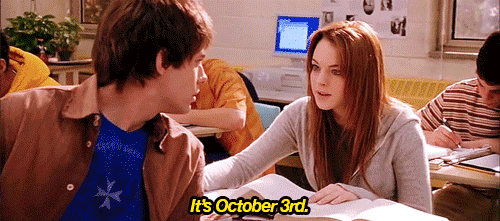Giving feedback on your critique partner’s manuscript is one of the main things you will do as a critique partner. Other duties include making jokes, getting no writing done, sending memes to each other, and w(h)ining. While we all have opinions about books, usually whether we liked them, that is not necessarily what you should be focusing on when you give your CP feedback.

I personally love looking at a manuscript and figuring out what works well, what could use fine tuning, and what might need to be changed. It’s like a puzzle and you just have to shuffle around the pieces to figure out the pattern it’s supposed to be in. Because I enjoy giving feedback (and my CPs don’t seem to hate what I suggest to them) I’ve got four critique tips for all of you that I think about when I give feedback!
1. I don’t care if you like it, does it work?
A lot of times we get hung up on our personal likes/dislikes in books—things like, “I hate love triangles,” “I thought it was weird the prince was really a giant slug,” or “I like talking cats.” Critiques are not the time to say, “I don’t like this word you used” or “I don’t like this character’s name.” While I do think we should be passionate about our CP’s books, sometimes writers do page or query critiques for people they don’t know and that writer might not be writing in a genre you are familiar with. Separate yourself from the idea of, “I don’t read horror” and think about, “What should this manuscript be doing? The author is trying to build tension between these characters and the scary Prince Slug and it’s not working. Why?”

2. Does this character arc clash with my outfit?
Another good example is with “unlikeable” characters. You can dislike them, surely there are some villains we are meant to hate, but what is important is we know why the villain is doing what they are doing. If Prince Slug is going to take over the Slugdom and turn everyone into mushrooms, we have to know it’s because he’s trying to prove himself to his father, King Slugorious. Of course, this motive does not excuse the prince’s actions, but rather explains them. It’s important to think about whether your CP’s characters are working within what the author wants. If your CP wants Prince Slug to take over the world, but his backstory and actions are weak, that is your comment. If Prince Slug is supposed to be our hero and not the villain and his actions are inconsistent, that is your comment. Extra points* if you provide suggestions to your CP for them to generate ideas!
*The points are fake and no one is giving them out or counting them.

3. Is it a bird? Is it a plane? Is it confusing world building?
Does Prince Slug turn into a handsome man when the full moon shines? Does this only happen to him and to no other slugs, so it does not work within the established slug-magic (where they create slug horns with their tentacles)? If Prince Slug is the only human shape-shifting slug, that’s a problem with the world building. We need to know our CP’s rules and should think about how to best establish what our CP wants to be happening. If your CP wants every Sunday to be the day Prince Slug mournfully looks out at the ocean, but he lives in a desert… That’s a problem. And slugs can’t live in the desert, it would dry them out! Think about your CP’s book in terms of world building from the ground up—slug buildings, slug clothing, slug courting, slug technology, etc. How is all of this working—is it?

4. Pacing an uncertain future
If one second Prince Slug is having an important conversation with King Slugorious and a sentence later he is running in a garden trying to take the golden key to a secret hiding place, this is an issue of pacing. I’ll admit that pacing can be super tricky—finding the right balance between a slow and fast is difficult, and it’s up to us to tell our CP when something isn’t working the way it could. Perhaps Prince Slug needs a scene where he finishes his conversation with his father and then receives a mysterious letter with a golden key inside the envelope that beckons him out to the gardens. There, he begins searching the garden based on what the letter says, knowing he is defying King Slugorious in the process. The key, of course, unlocks a secret part of the garden wall and contains old papers that—oops, spoilers. Revealing information is a give and take process, and we have to be able to tell our CPs whether they should hold off a reveal or keep it where it is. Are you walking, jogging, or running away with the keys to the slugmobile?

In summary, be sure to look at character arc, world building, and pacing when giving your critique partners feedback on their manuscripts. It’s important to note that constructing critiques in of itself is a craft, something we all have to practice.
We also have to tailor our feedback for our CPs sometimes—we should ask what they want. One of my fellow WBPartiers might ask me to read their manuscript only for world building inconsistencies, another might ask me to read for pacing, and someone else could want all three of the points I’ve talked about here. If you come up with any other notes other than what was requested of you, be ready to back up why!
Hopefully this post has helped some of you who are unsure of what to focus on when giving feedback to critique partners! (Or maybe now you ship Prince Slug with Captain Slugarter.)

5 thoughts on “You’re a Critique Partner, Now What? Giving Constructive Feedback”